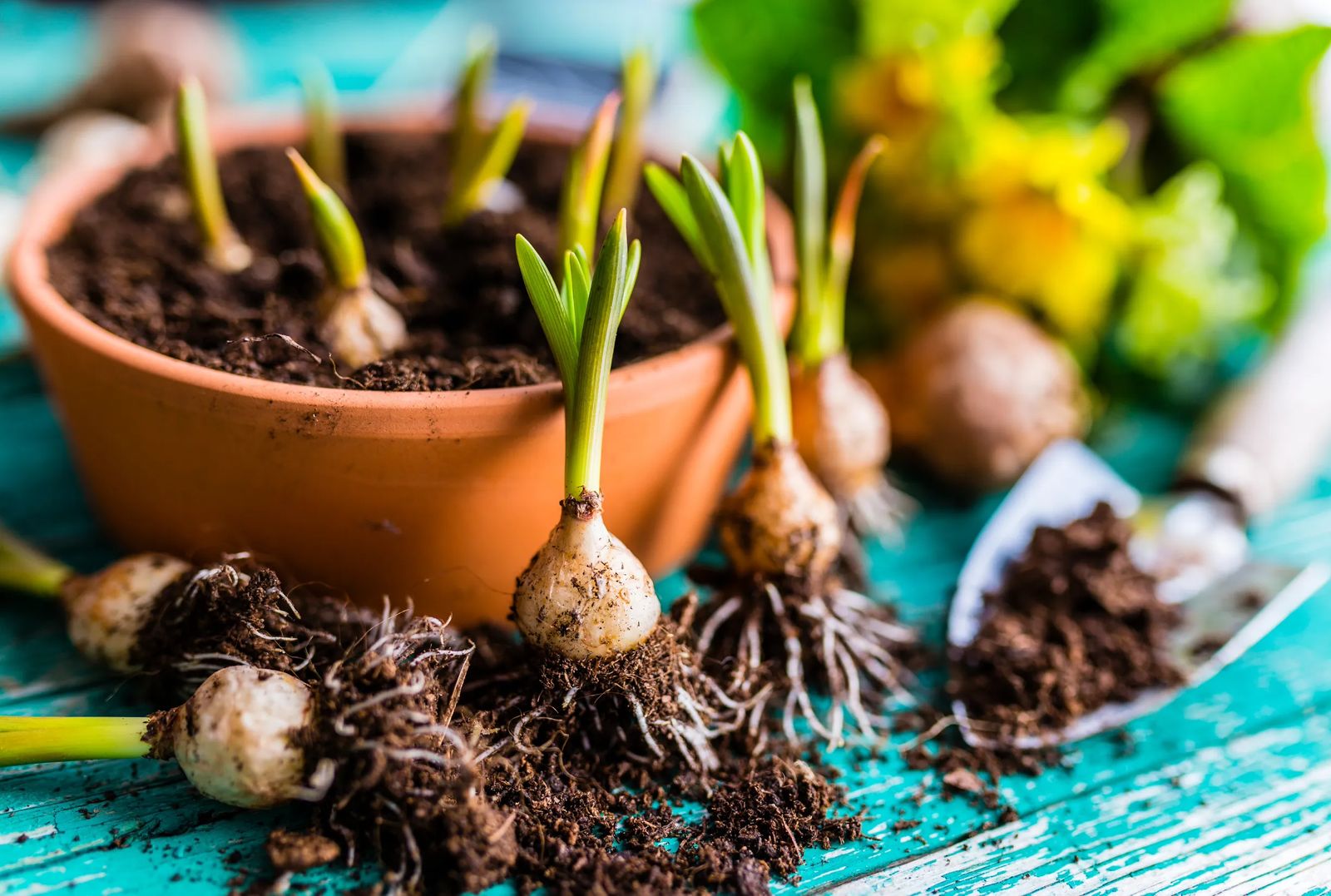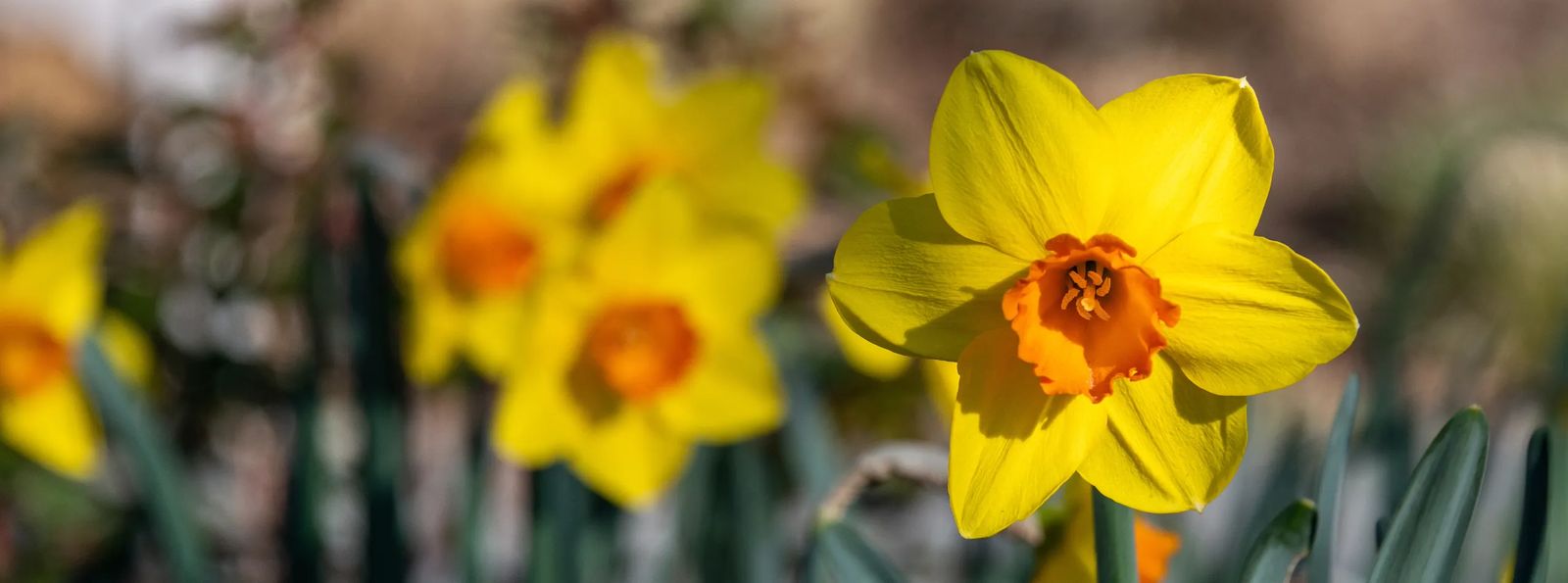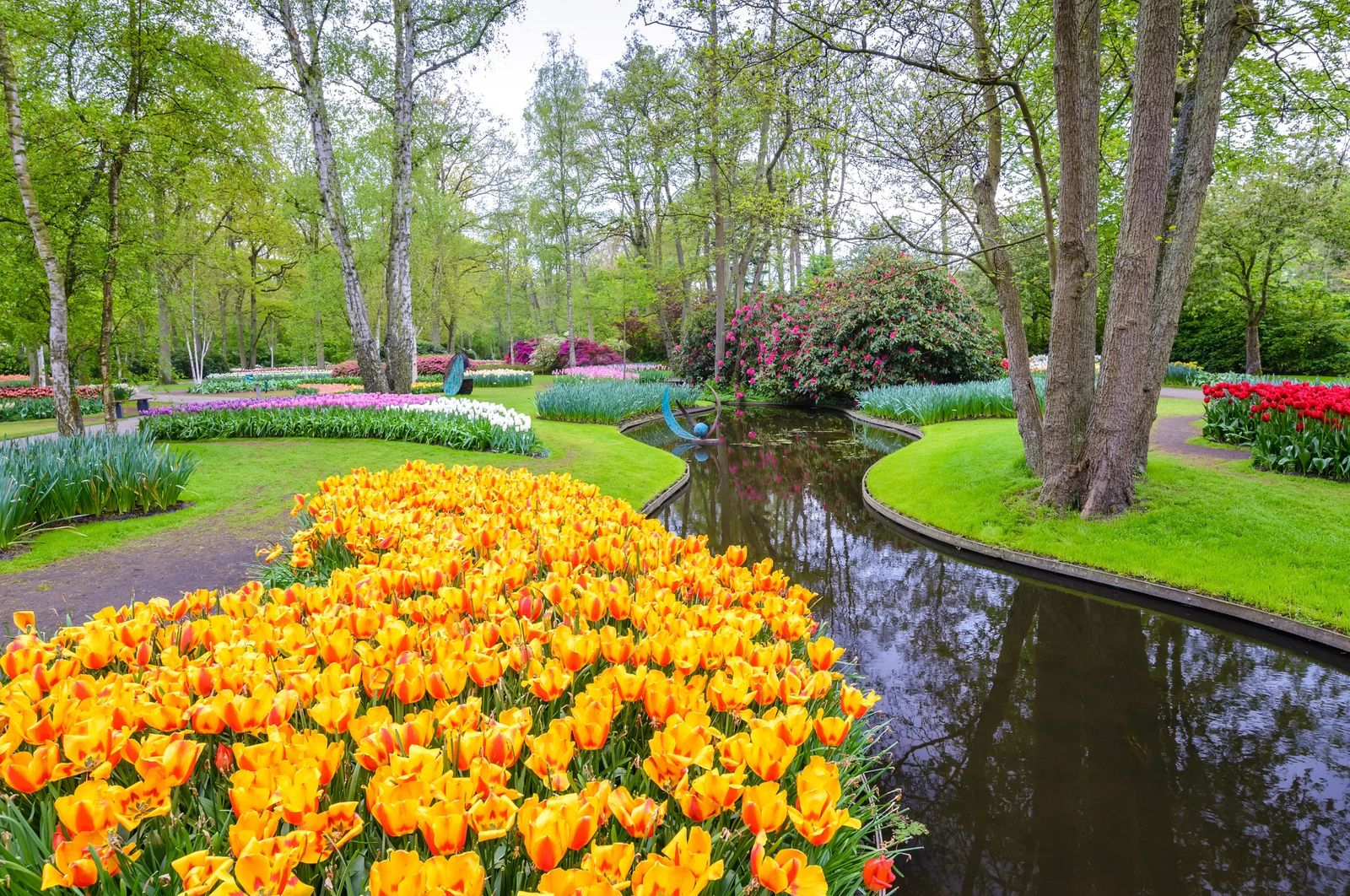
Let's Think Spring!
Want tulips or crocus to sprout in your yard? Now's the time for spring bulbs
Gainan's Garden Center
As we enjoy the last weeks of summer, it may seem like a strange time to think of spring, but if you want spring to truly spring up with tulips, daffodils, crocus and more, fall is the time to plant spring flowering bulbs. All of these bulbs must be planted before deep frost hardens the ground. And, once planted, the bulb produces roots and flowers begin to form throughout the winter.
Think about what kind of look you are trying to create. Bulbs can be planted anywhere in your garden. Scatter them for a naturalized look, plant in clusters for spots of color or do a mass planting for a dramatic showpiece bed.
Bulbs don’t need to be off in a bed by themselves. They can be planted among perennials, underneath permanent groundcovers like vinca or ivy, or tucked into niches in rock gardens. Bulb plants also make good companions for plants with alternate up-and-down times. Daffodils and hostas are an especially good combination. The daffodils are up and flowering before the hostas leaf out; then in summer, the hosta foliage covers the dormant daffodils.

Keep in mind that although these bulbs are considered “spring” bloomers, they are categorized into early, mid- and late-season bloom times. So if you want your white crocus and purple tulips to bloom together, make sure they both bloom in the same part of the season. Weather conditions and planting locations will affect bloom dates. Bulbs in beds facing south or near a foundation where the soil is warmer will tend to bloom earlier than bulbs planted in an area that receives more shade. With good planning and selection, you will have bulbs that will provide color from April to mid-June. A special note for all of the perfectionists out there, don’t let your perfectionism get in the way. If you don’t like how your garden looks next spring, you can move the bulbs next fall. That’s the beauty of gardening. It’s a dynamic work of art that is always in progress. Just dive in and get dirty!

After you’ve made a plan, the next step is to prepare the area. Bulbs need to be planted in soil that drains well. If your soil is heavy, add a 3-4 inch layer of compost and work the soil to a depth of 12-18 inches. To help future growth, fertilize in the fall with a granular high-phosphorous fertilizer and again in the spring when the shoots appear.
Now you are ready to take the next step and plant. Larger bulbs, such as tulips, large daffodils and hyacinths, get planted 8-10 inches deep and at least four inches apart. Smaller bulbs, like crocus, scilla and muscari, can be planted 4-5 inches deep and 2-4 inches apart. In sandy soil, plant two inches deeper. Deeper planting keeps the bulbs from freezing during the winter cold. Be sure to check the recommended planting depths and spacing for each type of bulb. The goal is to space the bulbs far enough apart that the flowers will not be crowded, but close enough together that the planting will look full.

If you are planting a large quantity of bulbs in a new bed, you may find it easier to excavate the whole area to the proper depth, place the bulbs in the bottom and back fill the soil. You can also use a bulb planter, auger or trowel to dig individual holes for each bulb. For even flowering, make sure that all the bulbs of the same kind are at the same depth. Place the bulbs firmly in the ground with the pointed end up and the root end down, cover with soil and water thoroughly. If there is a long dry spell, water your bulbs again. In our area, it is recommended that you cover with four to six inches of mulch (compost, cover bark or other organic material).

In the spring, remove the mulch before the tender shoots develop more than an inch or two. After blooming, the bulbs will continue to grow, store food and form next year's flowers. Good care at this time is very important for vigorous blooms the following spring. Remove the dead flowers so the bulbs won't spend their energy making seeds. Allow the foliage to yellow and wither naturally. Don't cut the leaves off until they are completely brown. Leave the bulbs in the ground through the summer and fertilize with a bulb booster again in the fall.
Then, watch the following spring as those blooms are some of the first flowers to burst forth, giving a nod to a time of year full with color and beauty.









